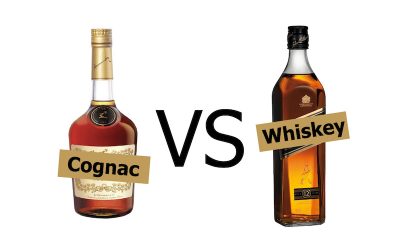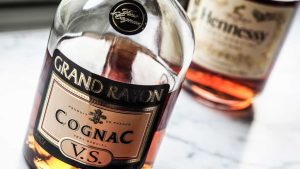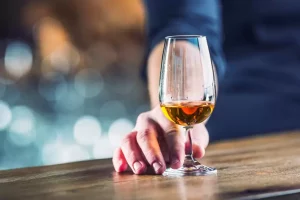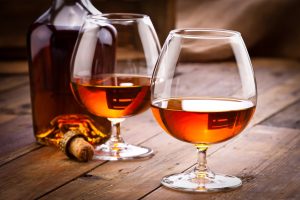Brandy and cognac are two alcoholic beverages that are often confused with each other, but they are not the same thing. In fact, the term “cognac” is actually a specific type of brandy that comes from a particular region in France. The main difference between brandy and cognac lies in their production process and the specific requirements for each.
While brandy can be made anywhere in the world, cognac must meet strict regulations and come only from the Cognac region in France. This article will explore the difference between brandy and cognac in more detail, including their origins, production methods, and flavor profiles.
History of Brandy and Cognac
Brandy and cognac are two alcoholic beverages that are often confused with each other, but they are not the same thing. In fact, the term “cognac” is actually a specific type of brandy that comes from a particular region in France.
The main difference between brandy and cognac lies in their production process and the specific requirements for each. While brandy can be made anywhere in the world, cognac must meet strict regulations and come only from the Cognac region in France.
Brandy vs cognac
Brandy:
- It can be made anywhere in the world
- Made by distilling wine or fermented fruit mash
- Aged in oak barrels for a minimum of 3 years
- No specific production regulations or requirements
- Comes in a wide variety of styles and flavors
Cognac:
- Must be made in the Cognac region of France
- Made by distilling specific grape varieties and using specific production methods
- Aged in oak barrels for a minimum of 2 years
- Must meet strict production regulations and requirements, including using specific grape varieties, distillation methods, and aging requirements
- Comes in specific styles and flavor profiles dictated by the region’s regulations
Production Process of Brandy and Cognac
The production processes of brandy and cognac are similar in that they both involve the distillation of wine, but there are some key differences.
Brandy is typically made by distilling wine or fermented fruit mash. The wine is heated in a still, which causes the alcohol to evaporate and then condense back into a liquid. This liquid is then aged in oak barrels for a minimum of 3 years to give it its characteristic flavor and color. Brandy can be made anywhere in the world, and there are no specific regulations governing its production.
Cognac, on the other hand, must be made in the Cognac region of France and must adhere to strict production regulations. The first step in making cognac is to select specific grape varieties, such as Ugni Blanc, Folle Blanche, or Colombard. The grapes are harvested and pressed to produce a specific type of wine that is low in alcohol and high in acidity.
The wine is then distilled twice in copper pot stills, which are specifically designed for making cognac. The resulting liquid, known as eau de vie, is then aged in oak barrels for a minimum of 2 years. The barrels used for aging are specifically selected and can only be used once to ensure the quality of the cognac. During the aging process, the eau de vie interacts with the oak barrels, which gives it its characteristic color and flavor.
After aging, the eau de vie is blended to create the final product. Blending is done to ensure consistency in flavor and quality from one batch to the next. The resulting cognac is then bottled and labeled according to its age, which ranges from VS (Very Special) to VSOP (Very Superior Old Pale) to XO (Extra Old).
Overall, the production process of cognac is more regulated and specific than that of brandy, which contributes to its unique and highly sought-after flavor profile.
Types of Grapes Used in Brandy and Cognac Production
There are several types of grapes that are commonly used in brandy and cognac production:
- Ugni Blanc (also known as Trebbiano): This is the most widely planted grape variety in the Cognac region of France and is used for both brandy and cognac production.
- Folle Blanche: This grape was once the primary grape used in cognac production but has since been largely replaced by Ugni Blanc. It is still used in some regions, however, and is known for producing cognacs with floral and fruity aromas.
- Colombard: This grape is commonly used in Armagnac production, which is a type of brandy made in the Gascony region of France. It is known for producing brandies with a fruity character and good acidity.
- Baco Blanc: This grape is a hybrid of Folle Blanche and Noah and is used in Armagnac production. It is known for producing brandies with a full body and rich flavor.
- Muscat: This grape is used in the production of Muscat-based brandies, which are typically sweet and aromatic.
- Pinot Noir: This grape is used in the production of brandies in the Burgundy region of France and is known for producing brandies with a delicate and fruity character.
Aging Process of Brandy and Cognac
The aging process is a crucial part of brandy and cognac production, as it allows the spirit to develop its characteristic flavors and aromas.
Here is a general overview of the aging process for brandy and cognac:
- Selection of barrels: Brandy and cognac are typically aged in oak barrels, which can be made from a variety of different types of oak, such as Limousin or Tronçais. The barrels are carefully selected based on their age, quality, and history of previous use.
- Filling and storage: The spirit is then filled into barrels and stored in a cool, dark cellar, where it will age for a minimum of two years for cognac and three years for brandy. However, many producers will age their spirits for much longer, with some cognacs and brandies aging for several decades.
- Evaporation and oxidation: During the aging process, a portion of the spirit will evaporate from the barrels, which is known as the “angel’s share.” This loss of volume concentrates the remaining spirit and intensifies its flavors. The spirit will also undergo a slow oxidation process, which contributes to its complexity and depth of flavor.
- Blending: After aging, the brandy or cognac will be carefully blended by the producer to achieve the desired flavor profile. This may involve blending different barrels of the spirit of varying ages to achieve a consistent flavor and quality.
- Bottling: Once the blending process is complete, the brandy or cognac is bottled and ready to be enjoyed. Some producers will also continue to age their spirits in a bottle, which can further enhance their flavors and aromas over time.
Differences in Flavor Profile between Brandy and Cognac
Brandy and cognac are both types of grape-based spirits, but they differ in their production methods and flavor profiles.
Here are some of the key differences in flavor profile between brandy and cognac:
- Grape variety: Brandy can be made from a variety of grape varieties, while cognac is made exclusively from Ugni Blanc grapes. This gives cognac a more consistent flavor profile, with notes of citrus and floral.
- Region: Brandy can be produced in many regions around the world, while cognac can only be produced in the Cognac region of France. The soil and climate in the Cognac region contribute to the unique flavor profile of cognac, which is characterized by notes of oak, vanilla, and spice.
- Age: Brandy is typically aged for a minimum of three years, while cognac is aged for a minimum of two years. This longer aging period for brandy can result in a more complex flavor profile, with notes of caramel, fruit, and nut.
- Blending: Brandy is often blended with other spirits or additives, which can affect its flavor profile. Cognac, on the other hand, is typically blended only with other cognacs of different ages to achieve a consistent flavor.
- Alcohol content: Brandy typically has a lower alcohol content than cognac, which can contribute to a softer and more approachable flavor profile.
Overall, brandy tends to have a broader range of flavor profiles due to the variety of grape varieties and production methods used, while cognac has a more consistent flavor profile due to its exclusive use of Ugni Blanc grapes and production methods in the Cognac region.
Alcohol Content in Brandy vs Cognac
The alcohol content in brandy and cognac can vary depending on the producer and the specific product. However, there are some general guidelines that can be used to compare the alcohol content in these two types of spirits.
- Brandy: The alcohol content in brandy can range from around 35% to 60% ABV (alcohol by volume), with most brandies falling in the range of 40% to 45% ABV. Brandy is typically distilled to a lower alcohol content than cognac, which contributes to its softer and more approachable flavor profile.
- Cognac: The alcohol content in cognac is typically higher than in brandy, ranging from around 40% to 70% ABV, with most cognacs falling in the range of 40% to 50% ABV. Cognac is distilled to a higher alcohol content than brandy, which can contribute to its more complex and intense flavor profile.
It’s worth noting that the alcohol content in both brandy and cognac can be affected by factors such as the aging process, blending, and bottling. Some brandies and cognacs may also be bottled at a higher or lower proof, depending on the producer’s preference or market demand.
Popular Brands of Brandy and Cognac
There are many popular brands of brandy and cognac available around the world, each with its own unique flavor profiles and production methods.
Here are some examples of popular brands of brandy and cognac:
Brandy:
- E&J Gallo: A well-known American brandy producer that offers a range of brandies, including their popular E&J VS and E&J XO.
- Torres: A Spanish brandy producer that is known for its premium brandies, such as Torres 10 and Torres Jaime I.
- St-Rémy: A French brandy producer that offers a range of brandies, including St-Rémy VSOP and St-Rémy XO.
Cognac:
- Hennessy: One of the most well-known cognac producers in the world, offering a range of cognacs, including their popular Hennessy VS and Hennessy XO.
- Rémy Martin: A French cognac producer that is known for its premium cognacs, such as Rémy Martin VSOP and Rémy Martin XO.
- Martell: Another French cognac producer that offers a range of cognacs, including Martell VS and Martell Cordon Bleu.
Other popular brands of brandy and cognac include Courvoisier, Hine, and Metaxa.
Price Differences between Brandy and Cognac
Brandy and Cognac are both types of distilled spirits made from grapes. However, there are some key differences between the two that can affect their price.
Cognac is a type of brandy that is made in the Cognac region of France. It is produced using a specific method that involves double distilling white wine from specific grape varieties, such as Ugni Blanc, Colombard, and Folle Blanche.
The resulting spirit is then aged in oak barrels for a minimum of two years, with higher-quality cognacs often aged for much longer. The strict regulations on grape varieties, production methods, and aging requirements make Cognac a premium product, which can often come with a higher price tag than other types of brandy.
On the other hand, brandy can be made from a variety of fruits, such as apples, apricots, and cherries, in addition to grapes. The production method can also vary, with some brandies being aged in oak barrels and others not. As a result, the price of brandy can vary greatly depending on factors such as the fruit used, the production method, and the length of aging.
Health Benefits and Risks of Drinking Brandy and Cognac
Brandy and Cognac are alcoholic beverages that are enjoyed by many people around the world. While moderate consumption of these spirits may have some potential health benefits, excessive or regular consumption can also have negative health effects.
Health benefits of drinking brandy and cognac in moderation:
- Antioxidants: Both brandy and cognac contain antioxidants, which can help to reduce the risk of heart disease and stroke by preventing damage to cells and tissues.
- Digestive aid: Brandy and cognac have long been used as digestive aid, helping to soothe an upset stomach or improve digestion after a meal.
- Blood circulation: Moderate consumption of brandy and cognac may help to improve blood circulation and reduce the risk of blood clots.
- Stress reduction: Both brandy and cognac may have a calming effect on the nervous system, helping to reduce stress and anxiety.
Health risks of drinking brandy and cognac:
- Addiction: Regular consumption of brandy and cognac can lead to addiction and dependence on alcohol.
- Liver damage: Excessive consumption of alcohol, including brandy and cognac, can lead to liver damage, which can be life-threatening.
- High blood pressure: Drinking too much brandy or cognac can raise blood pressure levels, increasing the risk of heart disease and stroke.
- Weight gain: Brandy and cognac are high in calories and can contribute to weight gain if consumed in excess.
Conclusion
If you want to know the difference between brandy and cognac, then we have got you covered here. Brandy and Cognac are both types of distilled spirits made from grapes. Cognac is a specific type of brandy made in the Cognac region of France, using specific grape varieties and production methods, which can result in a higher price tag.
Brandy, on the other hand, can be made from a variety of fruits and using different production methods, which can result in varying flavors and price points.




